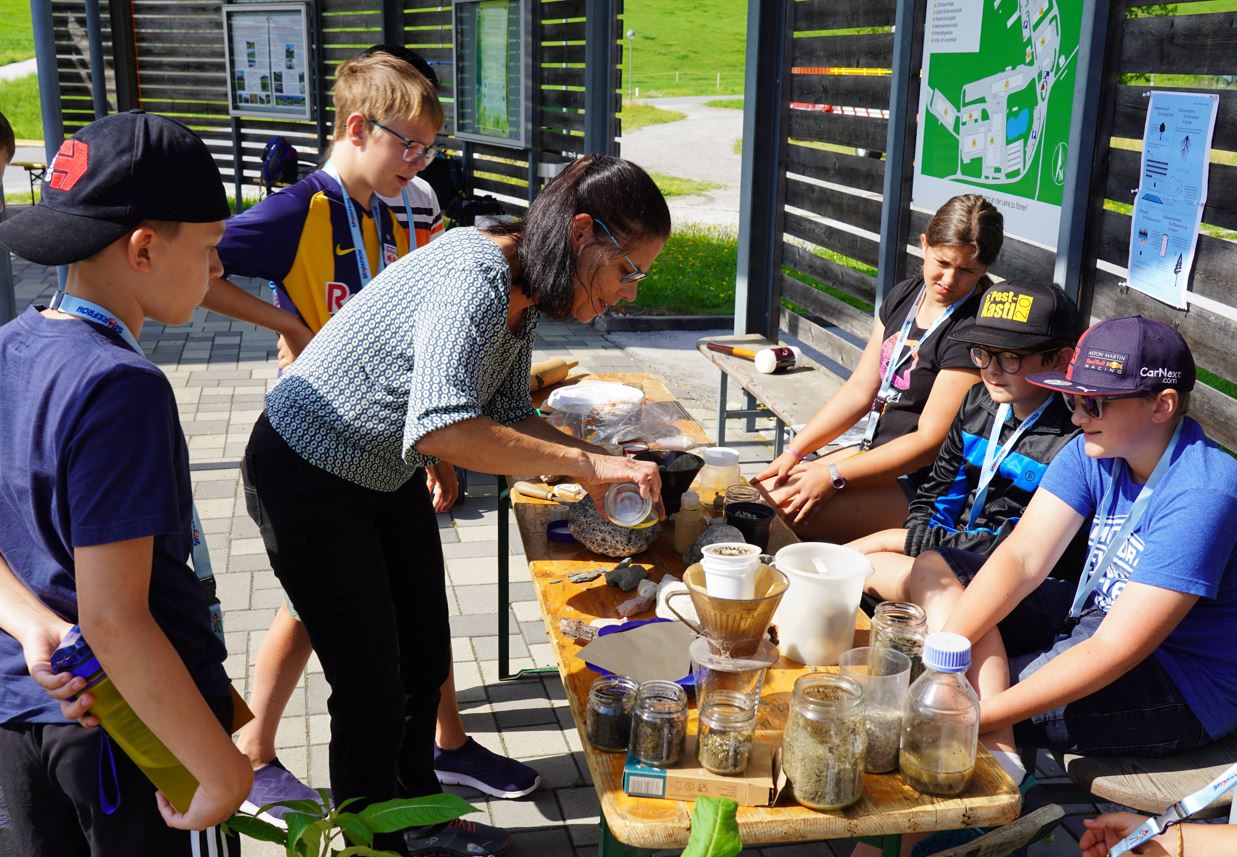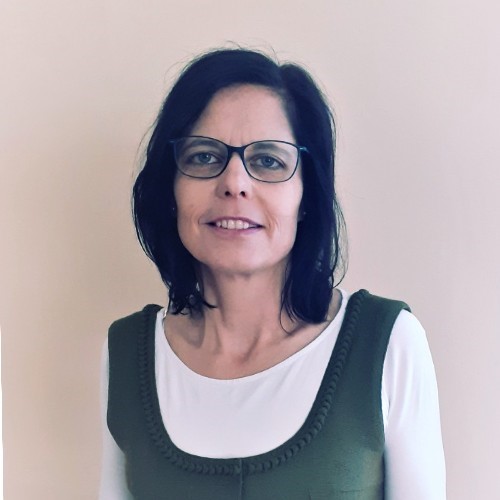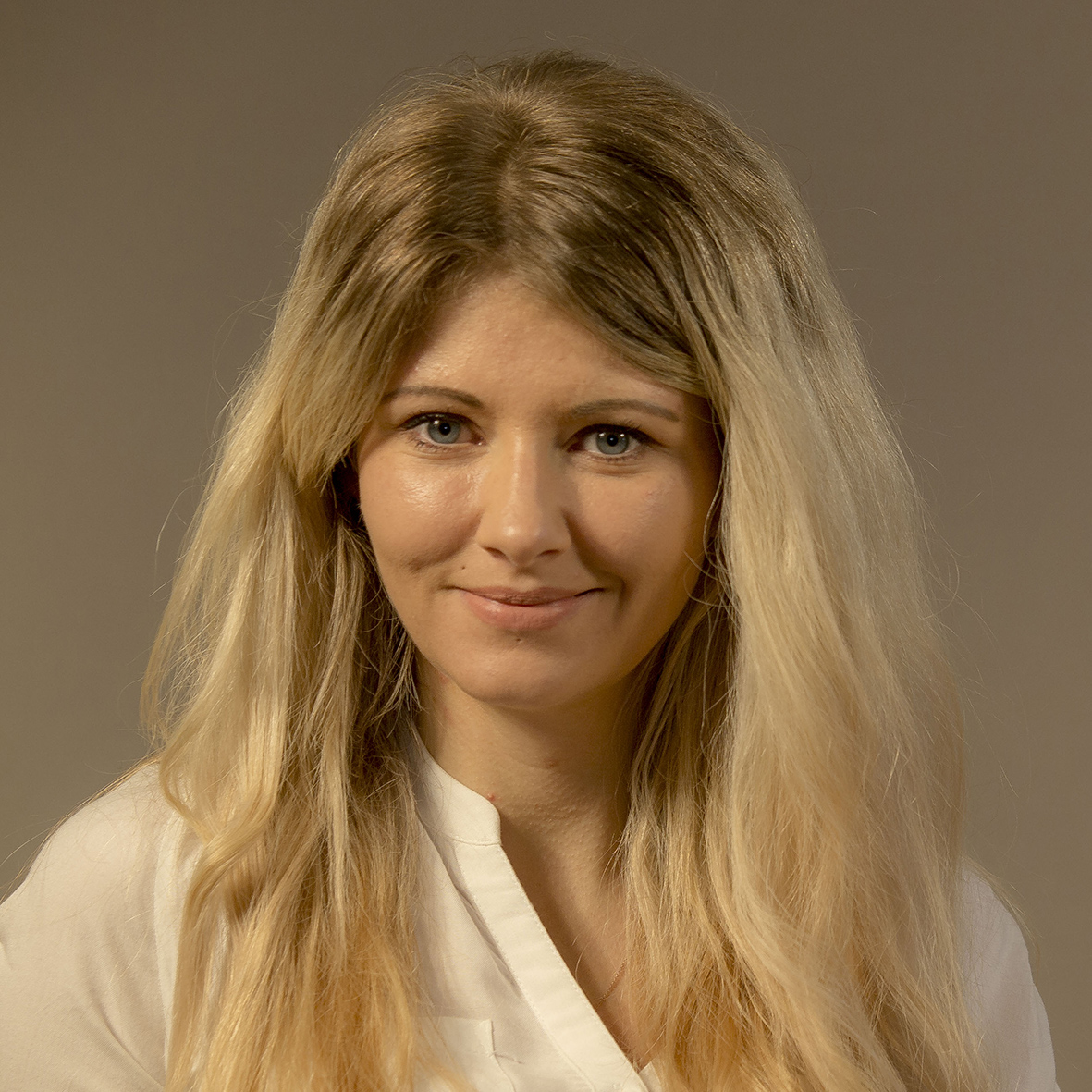The lecture units covered different focuses in order to impart a diverse range of knowledge.
The world of pollinator species
First, the young researchers received an interesting insight into the world of pollinator species from biologist Verena Mayer and assistant Raphael Poier. The pollen collection systems of the different bee species were recreated and explained in detail using stuffed bees. The young scientists looked at different species of pollinators under the microscope. Using demonstration models of daisy family, mint family and a carnation as a single flower, the children's academy participants also learned about the different flower shapes and tricks of flowers to attract insects. The young researchers were able to smell the scent of certain herbs as attractants for pollinators on selected plants, such as chamomile or wild oregano.
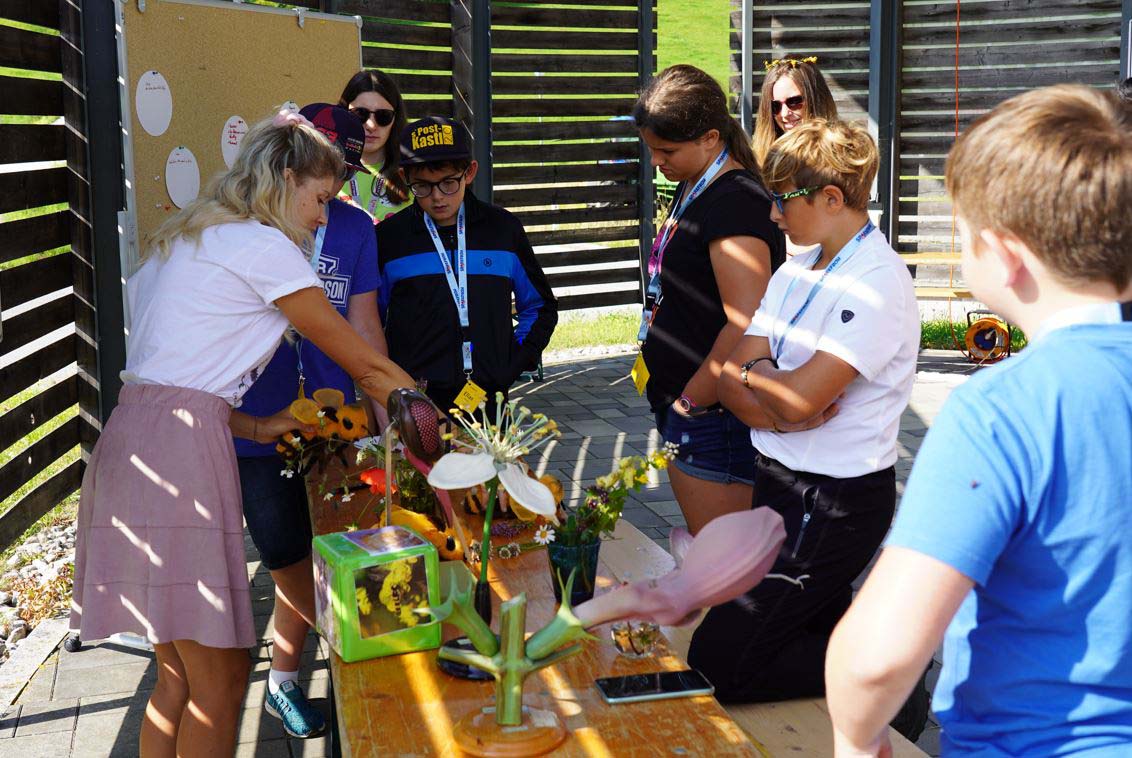
Soil and soil animals
At the next stop, landscape ecologist Renate Mayer first explained how soil is formed. The students counted the different groups of soil animals using the “leg clock” and searched them in soil substrates with magnifying glasses. The lime content of rocks could be examined using hydrochloric acid and water could be purified using a self-made sewage treatment plant. The young researchers used the soil drill to determine the soil depth, root penetration and soil layers. She was also interested in the topic of soil sealing, soil erosion, plant roots and their stability.
Livestock farming and fodder crops
The second block of lectures with practical exercises covered the area of livestock farming as well as feed plants and foods that protect the climate.
Animal husbandry expert Stefanie Gappmaier focused her lecture on milk production and animal welfare. The young researchers were impressed by the milk yields and milk requirements of calves, kids and lambs, as well as the variety of products that can be made from cattle, goats and sheep's milk. The children listened with interest and were also allowed to pet the animals in the stables. At the end, the children were able to easily make a delicious spread from curds and herbs and take samples with them in a cool box.
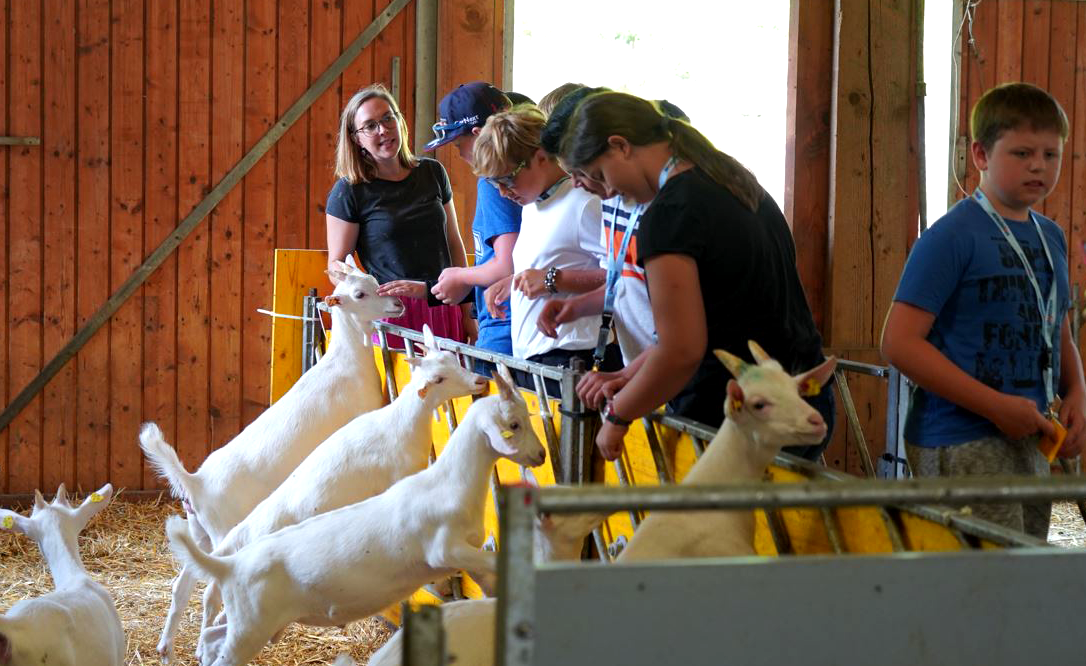
After lunch, the young students had a short test in the form of a quiz, which was then rewarded with an ice cream.
Outdoor classroom
In the afternoon, the children's academy participants visited the open-air classroom of the Bio-Institute of the HBLFA Raumberg-Gumpenstein. Here they were able to get to know the diverse habitats of rare and protected plant and animal species, which were presented by Renate Mayer from the HBLFA Raumberg-Gumpenstein and Wolfgang Riedl, organizer of the Rottenmann Children's Academy 2021.
Although the young researchers completed a very educational day at university, their thirst for knowledge was still not exhausted.
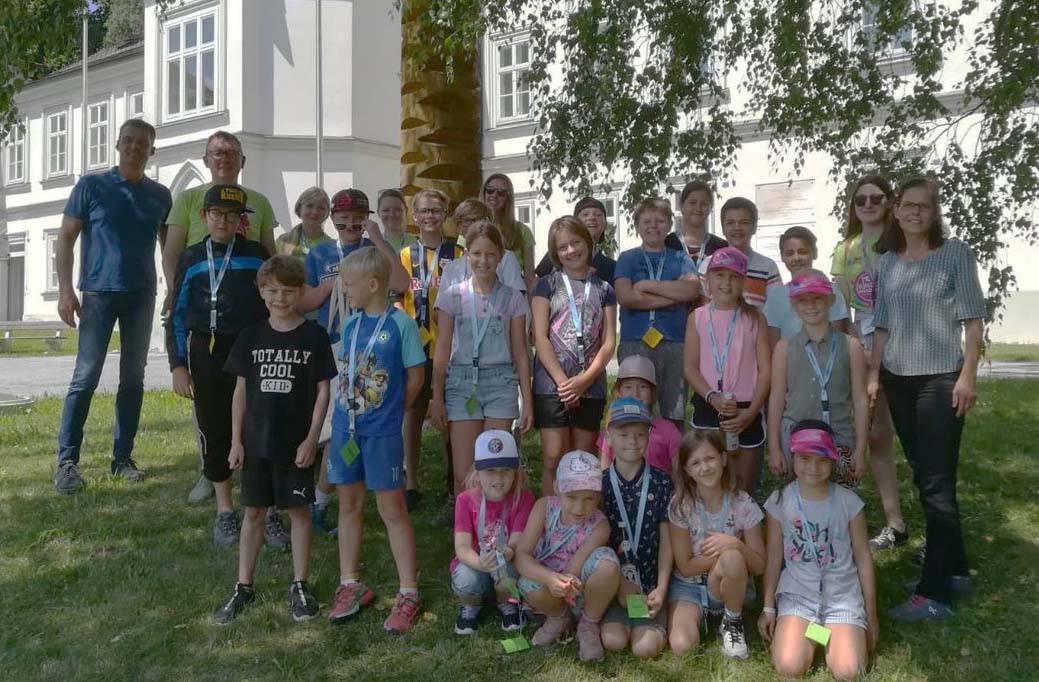
More information
HBLFA Raumberg-Gumpenstein, Acquisition Department,
Wolfgang Riedl, project manager at the Rottenmann Children's Academy,






